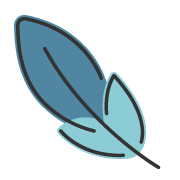Why does water freeze into ice?
2024-11-20
Once upon a time, in a land made of sparkling snow and shimmering ice, lived a tiny water droplet named Pip. Pip loved to bounce and splash and giggle with all his watery friends in a big, blue lake. They played hide-and-seek amongst the lily pads, chased each other in the sunlight, and made tiny waves when the wind blew. Pip was a very curious droplet. He loved to ask questions, especially about the mysterious, frosty things that sometimes appeared on the lake’s edge.
“What are those sparkly things, Mr. Lakeside?” Pip would ask a wise old, slow-moving water droplet who had seen many seasons come and go.
Mr. Lakeside would chuckle, a sound like tiny pebbles tumbling together. “Those, my little friend, are ice crystals. They're like us, but they've gone to sleep in a very special way.”
Pip was puzzled. “Sleep? But we don't have eyelids!”
Mr. Lakeside smiled. “Not the kind of sleep you mean. It’s a different kind of sleepy for water. You see, we’re made of tiny, tiny things called molecules. Imagine them as little bouncy balls, always moving and jiggling around.”
Pip imagined bouncy balls, zooming and bouncing all over the place. “They bounce around a lot!” he exclaimed.
“Exactly!” said Mr. Lakeside. “When the sun shines and it's warm, our molecules bounce around wildly. They have lots of energy and can move freely, making us a liquid – water! We can flow and splash and be whatever shape we want.”
Pip imagined his bouncy ball molecules zipping and zooming, bumping into each other, creating the happy splashes he was so familiar with.
“But,” continued Mr. Lakeside, “when it gets colder and colder, something amazing happens. The bouncy balls start to slow down. They lose their energy, and they don't bounce around so much anymore.”
Pip pictured the bouncy balls slowing down, their movements becoming sluggish.
"As it gets even colder," Mr. Lakeside explained, "the bouncy balls start to snuggle close together. They want to feel warm, so they huddle together in a very specific way, forming neat, organized lines and patterns." He pointed to a nearby ice crystal sparkling in the faint sunlight. "See those beautiful patterns? Those are the bouncy balls holding hands and forming a solid structure."
Pip watched, fascinated. He saw the intricate patterns in the ice crystal, like tiny stars frozen in time.
“So, the bouncy balls – the molecules – are still there, but they’re not bouncing around freely anymore. They’re locked in place, forming a solid shape. That's what makes ice!” Mr. Lakeside said.
“So, ice is just us… but sleepy?” Pip asked, his little watery face filled with wonder.
“Exactly! It’s us, but our molecules are neatly arranged and not bouncing around so much because they’ve lost their energy. It’s like when you’re tired after playing all day and you snuggle up in your bed,” Mr. Lakeside explained gently.
Pip nodded. He understood that tired feeling very well.
“And when it gets warmer again,” Mr. Lakeside continued, “the sun gives our sleepy molecules more energy, and they start to bounce and jiggle again. They break free from their neat little lines and patterns, and we turn back into water, ready to play again!”
Pip giggled, picturing his bouncy ball molecules waking up from their snuggle, bouncing and splashing excitedly.
“But Mr. Lakeside,” Pip asked, “why does the ice float on the water?”
Mr. Lakeside smiled. "That's because when our bouncy balls – the water molecules – snuggle together to form ice, they actually arrange themselves in a way that makes ice slightly less dense than water. Imagine the bouncy balls forming a kind of open structure, with tiny spaces between them. This makes ice less heavy than the same amount of water, so it floats!”
Pip pondered this for a moment, imagining the bouncy balls creating a slightly less packed structure in the ice than in the water. He found this amazing!
"So," Pip concluded, "Ice is just water molecules sleeping in a neat and tidy way because they're cold and don’t have much energy to bounce around. And because they snuggle in a special way, they're lighter than the water and float on top!"
Mr. Lakeside nodded approvingly. “You’ve got it, Pip! You’re a very smart little water droplet.”
And Pip, feeling incredibly proud of his newfound knowledge, bounced and splashed with renewed energy, knowing that even though he might turn into a sleepy ice crystal someday, he would always return to his bouncy, watery self when the sun warmed the land again. He knew the secret of the ice, and he knew that even in its frozen form, it was still just him – Pip, the ever-curious water droplet. He continued to play with his friends, forever fascinated by the world around him and the amazing changes that water could undergo. The sun warmed his little body, reminding him of the endless dance between water and ice, a magical cycle of energy and transformation.
